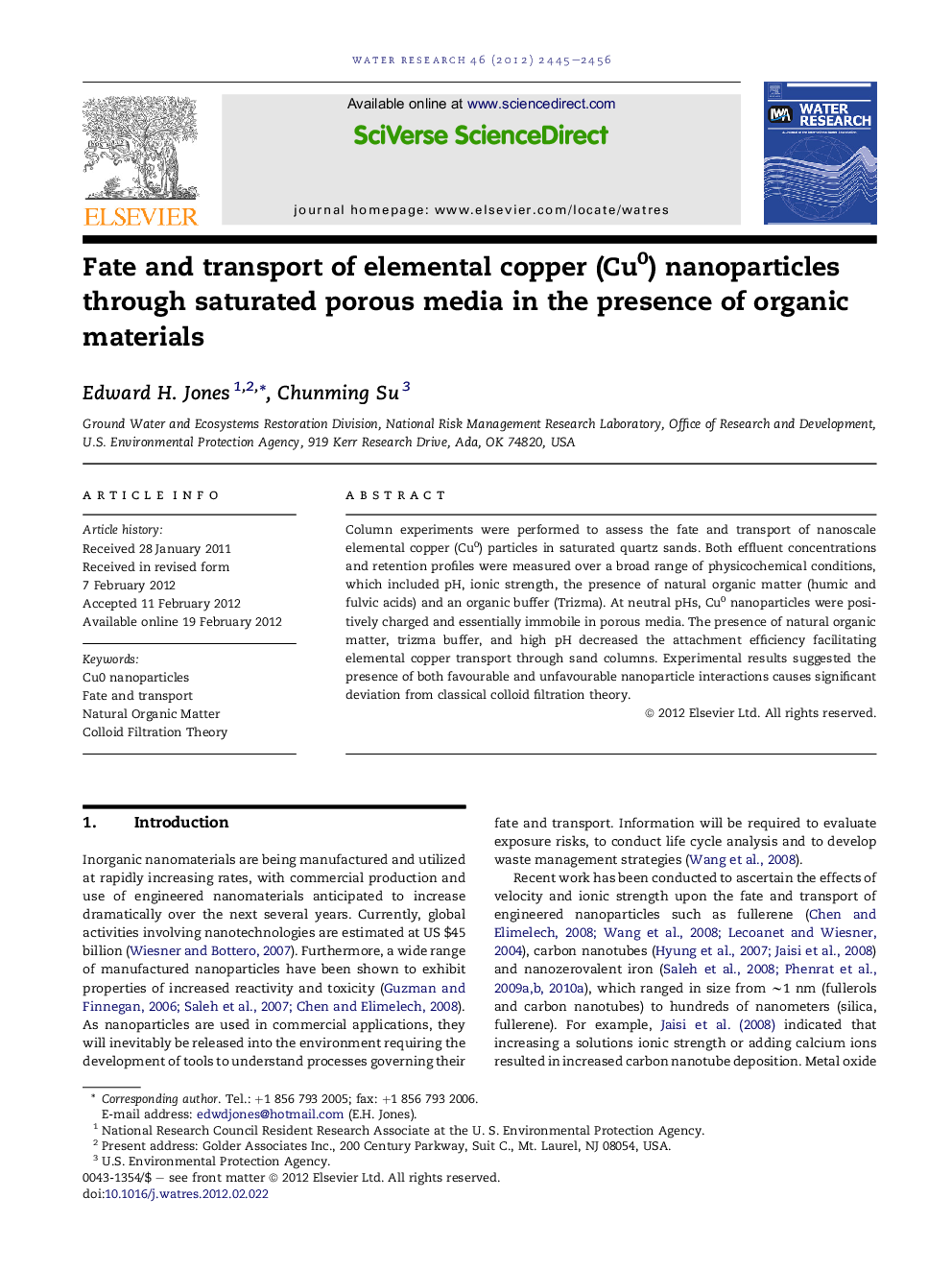| Article ID | Journal | Published Year | Pages | File Type |
|---|---|---|---|---|
| 4482947 | Water Research | 2012 | 12 Pages |
Column experiments were performed to assess the fate and transport of nanoscale elemental copper (Cu0) particles in saturated quartz sands. Both effluent concentrations and retention profiles were measured over a broad range of physicochemical conditions, which included pH, ionic strength, the presence of natural organic matter (humic and fulvic acids) and an organic buffer (Trizma). At neutral pHs, Cu0 nanoparticles were positively charged and essentially immobile in porous media. The presence of natural organic matter, trizma buffer, and high pH decreased the attachment efficiency facilitating elemental copper transport through sand columns. Experimental results suggested the presence of both favourable and unfavourable nanoparticle interactions causes significant deviation from classical colloid filtration theory.
Graphical abstractTransport of elemental copper (Cu0) nanoparticles in porous media in the presence of natural organic matter was investigated and interpreted via classical colloid filtration theory (CFT).Figure optionsDownload full-size imageDownload high-quality image (57 K)Download as PowerPoint slideHighlights► Oxidation of Cu0 forming Cu2O nanoparticles with a core–shell structure. ► Natural organic matter (NOM) decreased attachment facilitating copper transport. ► Column retention profiles had a hyperexponential shape. ► Results show significant deviation from classical colloid filtration theory.
